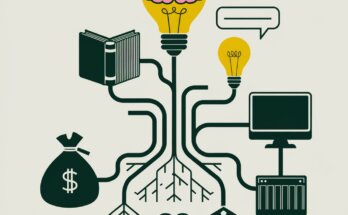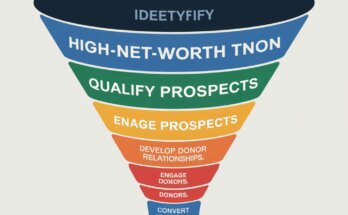In the world of nonprofit fundraising, engaging high-net-worth donors (HNWDs) is both an art and a science. These individuals possess the financial means to significantly impact your organization, but they also expect a level of personalized engagement that goes beyond standard solicitation. That’s where effective follow-up strategies come into play.
In this blog post, we will explore actionable strategies for engaging HNWDs after the initial contact, ensuring they feel valued, informed, and connected to your mission.
By the end, you’ll have a toolkit of techniques to foster lasting relationships with these vital supporters.
The Importance of Follow-Up
Follow-up is critical in nurturing donor relationships. It’s not just about asking for money; it’s about building trust and demonstrating the impact of their contributions.
Research shows that effective follow-up can increase donor retention rates and encourage larger gifts in the future.
The question is: how do we follow up effectively?
1. Personalize Your Communication
One of the most effective strategies for engaging HNWDs is to personalize your communication. Tailoring your messages to reflect the donor’s interests, past donations, and personal connections to your organization can make a world of difference.
Practical Example
Let’s say you recently met a donor who has a passion for environmental conservation. When following up, mention specific projects your organization is involved in that align with their interests. Instead of a generic thank-you email, craft a message that reads:
“Dear [Donor’s Name],
Thank you for your generous support during our last campaign! I wanted to share how your contribution is helping us restore local habitats in [specific area].
We are excited to report that we have already begun planting trees and collaborating with local communities to educate them about sustainability. I would love to keep you updated on our progress!”
This approach shows that you value their contributions and are mindful of their passions, which can help strengthen the relationship.
2. Show Impact Through Storytelling
People connect with stories, and HNWDs are no exception. Sharing powerful stories about the impact of their donations can deepen their connection to your cause.
Practical Example
Instead of merely stating facts about your organization’s achievements, craft a compelling narrative that illustrates the change their support has facilitated. For instance:
“Imagine a single mother named Maria, struggling to make ends meet while trying to provide for her children. With the help of our program, she not only learned job skills but also gained the confidence to apply for positions.
Thanks to supporters like you, Maria has secured a stable job and can now provide for her family’s needs. Your investment is not just a donation; it’s a lifeline for families like hers.”
This storytelling approach puts a human face on your work, making it relatable and emotionally resonant.
3. Schedule Regular Check-Ins
High-net-worth donors appreciate regular communication, but it’s essential to strike a balance. Schedule periodic check-ins to maintain the relationship without overwhelming them.
Practical Example
You might choose to reach out quarterly, offering updates on projects they’ve supported or upcoming events. A simple email could look like this:
“Hi [Donor’s Name],
I hope this message finds you well! I wanted to share some exciting news about our upcoming gala on [date] where we will be celebrating the achievements of our beneficiaries.
We would be honored to have you join us as a special guest! Let me know if you’d like to attend.”
This approach keeps donors engaged and aware of your organization’s activities, fostering a sense of community and involvement.
4. Utilize Multiple Channels
Different donors prefer different communication channels. Some may respond well to email, while others might prefer phone calls, social media, or even handwritten notes. To keep HNWDs engaged, consider a multi-channel approach.
Practical Example
Imagine you send a thank-you email after a donor makes a significant contribution. A few weeks later, follow up with a handwritten note expressing your gratitude.
Then, connect with them on LinkedIn to share updates and articles relevant to your organization. This varied approach ensures that you reach them through their preferred channels, increasing the likelihood of a positive response.
5. Invite Them to Exclusive Events
High-net-worth donors often appreciate exclusive opportunities to engage with your organization. Consider inviting them to special events or behind-the-scenes tours.
Practical Example
If your organization is hosting a private donor appreciation dinner or a facility tour, extend an invitation to your HNWDs. For example:
“Dear [Donor’s Name],
We are thrilled to invite you to an exclusive dinner with our leadership team on [date].
This is a fantastic opportunity to see firsthand the impact of your contributions and meet other like-minded supporters.
We truly hope you can join us!”
Inviting donors to exclusive events not only makes them feel valued but also strengthens their connection to your mission.
6. Ask for Feedback
Engaging high-net-worth donors also means seeking their input. Asking for feedback on your programs or initiatives shows that you value their opinion and are committed to continuous improvement.
Practical Example
After a donor event, consider sending a short survey asking for feedback. For instance:
“Hi [Donor’s Name],
Thank you for attending our recent event! We would love to hear your thoughts on how we can improve future gatherings. Your insights are invaluable to us and help shape our programming to better meet the needs of our community.”
This approach demonstrates your commitment to transparency and growth, which can resonate deeply with HNWDs.
A Story of Impact: Maria’s Journey
Let’s pause here and share a story that encapsulates the impact of effective follow-up.
Maria, a recent single mother, faced numerous challenges after losing her job due to the pandemic. She turned to a local nonprofit for support. Thanks to a generous donation from an HNWD, the organization was able to launch a job training program.
The donor received regular updates about the program’s progress. One particular follow-up email detailed Maria’s journey: she completed the training, secured a job, and was able to provide for her children again. The donor was so moved by the story that they chose to increase their support for the organization.
This illustrates the power of follow-up in not only sustaining donor relationships, but also enhancing their engagement with your cause.
7. Create a Donor Recognition Program
Recognizing the contributions of high-net-worth donors can strengthen their connection to your organization. A recognition program not only shows appreciation but also encourages continued support.
Practical Example
You might create a donor wall in your office, feature their names in your annual report, or host a special event to honor significant contributors. For instance:
“Dear [Donor’s Name],
We are proud to announce the launch of our Donor Recognition Program. As a valued supporter, your name will be displayed on our donor wall, and we’d like to feature you in our upcoming newsletter.
Thank you for making a difference in our community!”
Such gestures reinforce their importance to your mission and promote long-term loyalty.
8. Use Data to Tailor Engagement
Today, data plays a crucial role in donor engagement. Analyzing donor behavior and preferences can inform your follow-up strategies, allowing you to tailor your communication effectively.
Practical Example
If your donor history shows that certain individuals respond well to project updates via email, prioritize this method for them. Consider segmenting your donor list based on giving levels, engagement history, and interests. For instance:
“Hi [Donor’s Name],
We noticed you have shown a keen interest in our education initiatives. We’d love to share some exciting updates about our new program launching this fall that aligns with your philanthropic goals!”
Utilizing data in your follow-up can create a more personalized experience, making donors feel truly valued.
9. Provide Ongoing Education
Many high-net-worth donors appreciate learning more about the causes they support. Offering educational opportunities can enhance their engagement and deepen their understanding of your mission.
Practical Example
Consider hosting webinars, workshops, or informational sessions on topics related to your work. For instance:
“Dear [Donor’s Name],
We are excited to invite you to our upcoming webinar on [date], where we’ll discuss the current state of [relevant issue]. Your insights and participation would be invaluable as we work to address these challenges together!”
This strategy positions your organization as a thought leader in the field while providing donors with valuable information that enhances their connection to your cause.
Take Action Now!
Engaging high-net-worth donors through effective follow-up strategies is essential for building long-lasting relationships and securing ongoing support.
Ready to elevate your donor engagement strategies?
Subscribe to the Nonprofit Navigators Newsletter for expert tips, resources, and access to opportunities such as job openings, grant opportunities, exclusive webinars, and events. Join our community of passionate change-makers today!
>>>>Recommended Resources>>>>>
- The Small Business’s Guide to Winning Grants
- Request for Proposal Success: How to Write Proposals That Win
- The Ultimate Guide to Federal Grant Applications: Techniques for Success
- Digital Marketing for Nonprofits: A Comprehensive Guide to Boosting Your Impact Online
- Mastering Online Fundraising: A Nonprofit’s Guide to Digital Success




